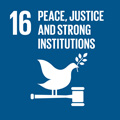- Docente: Francesca Cenerini
- Credits: 6
- SSD: L-ANT/03
- Language: Italian
- Teaching Mode: In-person learning (entirely or partially)
- Campus: Bologna
-
Corso:
Second cycle degree programme (LM) in
Philology, Literature and Classical Tradition (cod. 9070)
Also valid for Second cycle degree programme (LM) in History and Oriental Studies (cod. 8845)
Second cycle degree programme (LM) in Archaeology and Cultures of the Ancient World (cod. 8855)
Learning outcomes
At the end of the course the student knows in such a very detailed way the institutions of the Roman world and is also able to do an independent research on Roman political and institutional issues.
Course contents
Specific research:
Between institutions and practice: family institutions. Within the whole body of Roman institutions, whose knowledge is entrusted to the students through the study of handbooks, during the course will be analyzed in particular institutions related to the family life.
The detailed programme will be presented during the first lesson and made available since then.
Readings/Bibliography
Readings and bibliography will be given during the lessons basing upon students' previous Roman epigraphical and institutional knowledge. Students have to know G. Poma, Le istituzioni politiche del mondo romano, Il Mulino, Bologna 2009.
Additional reading:
Luigi Capogrossi Colognesi, Francesca Cenerini, Francesca Lamberti, Mario Lentano, Giulio Rizzelli, Biagio Santorelli, Anatomie della paternità. Padri e famiglia nella cultura romana, Lecce, edizioni Grifo, 2019.
Non-attending students must add:
1) D. Faoro (a cura di), L'amministrazione dell'Italia romana. Dal I secolo a.C. al III secolo d.C., Le Monnier Università, Firenze 2018;
2) C. Letta - S.Segenni (a cura di), Roma e le sue province. Dalla prima guerra punica a Diocleziano, Carocci, Roma 2105, ristampa 2017.
Teaching methods
Frontal lessons: presentation, reading and analysis of selected works. Students are invited to attend the lessons with personal remarks about the texts analysed in class.
Assessment methods
Students who attend at least 75% of the lessons are considered to be attending.
Oral examination. Students have to answer some questions about the bibliography of the course and about the texts analysed in class.
The exam will be conducted orally and will assess the student's command of the material studied in the course. The student will be asked to provide a commentary on texts selected from among those found in the course texts and will be judged on his ability to summarise and critically discuss topics raised in the course, making use of the exam bibliography and the course tools provided.
The assessment will thus consider the student's:
- competence in commenting on the texts, i.e. in identifying, dating and contextualizing the works illustrated;
- knowledge and understanding of the topics covered;
- ability to summarise and analyse themes and concepts;
- familiarity with the terminology associated with the subject and his ability to use it effectively.
Top marks will be awarded to a student displaying an ability to provide a full description of the textes and an overall understanding of the topics discussed during the lectures, combined with a critical approach to the material and a confident and effective use of the appropriate terminology
Average marks will be awarded to a student who has memorized the main points of the material and is able to summarise them satisfactorily and provide an effective critical commentary, while failing to display a complete command of the appropriate terminology.
A student will be deemed to have failed the exam if he displays significant errors in his understanding and failure to grasp the overall outlines of the subject, together with a poor command of the appropriate terminology.
This 6 CFU course can be chosen as a part of the 12 CFU Integrated Course "Roman Epigraphy and Roman Institutions (C.I.) (LM)". If the student has the Integrated Course (12 CFU) in his/her study plan, the final grade will result from the arithmetic average of the marks obtained in the two parts (“Roman Epigraphy") (1) (LM)" and “Roma Institutions (1) (LM)".
Teaching tools
Using power point and distribution of hand-out of the texts analysed in class.
Office hours
See the website of Francesca Cenerini
SDGs



This teaching activity contributes to the achievement of the Sustainable Development Goals of the UN 2030 Agenda.
